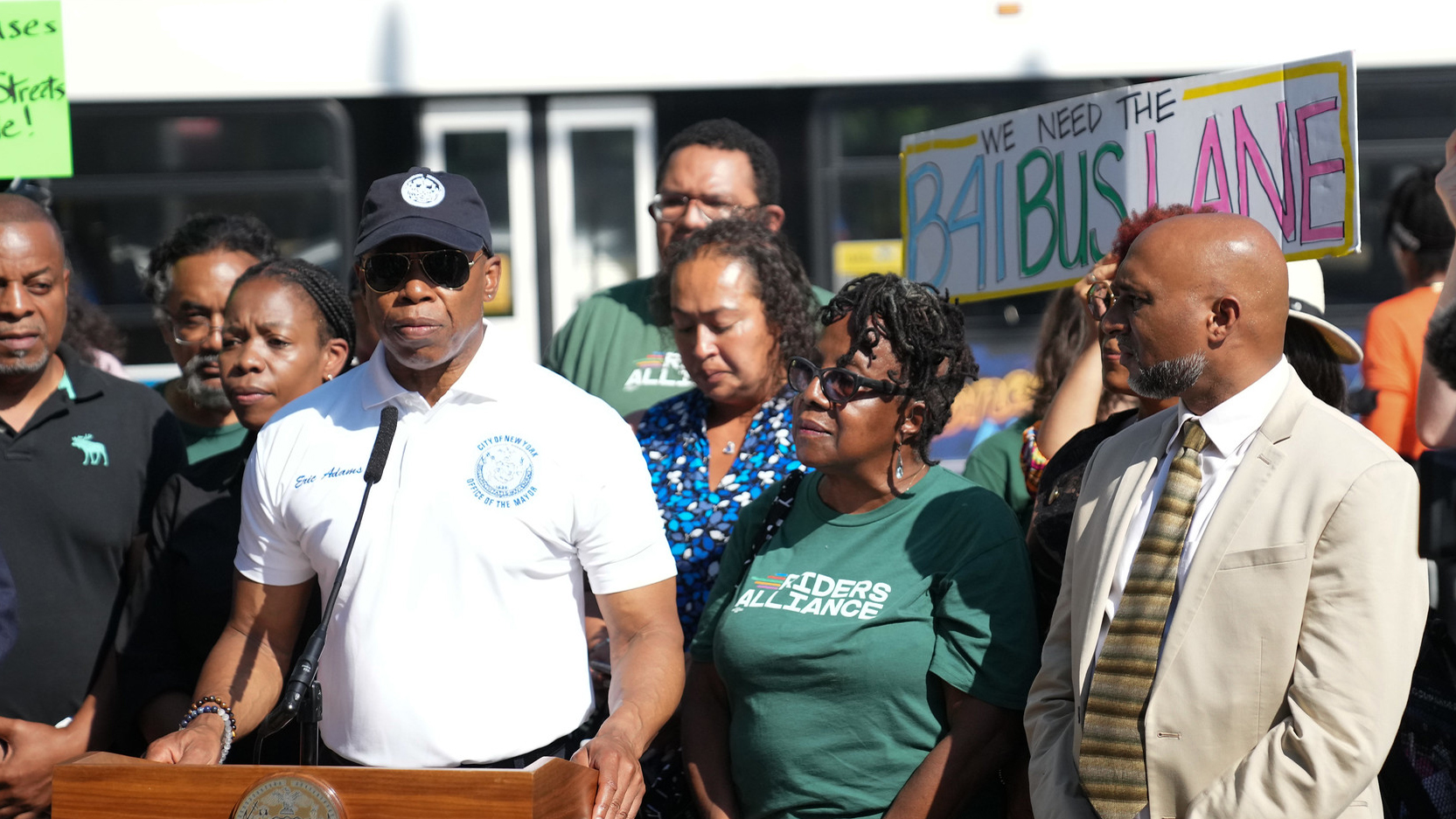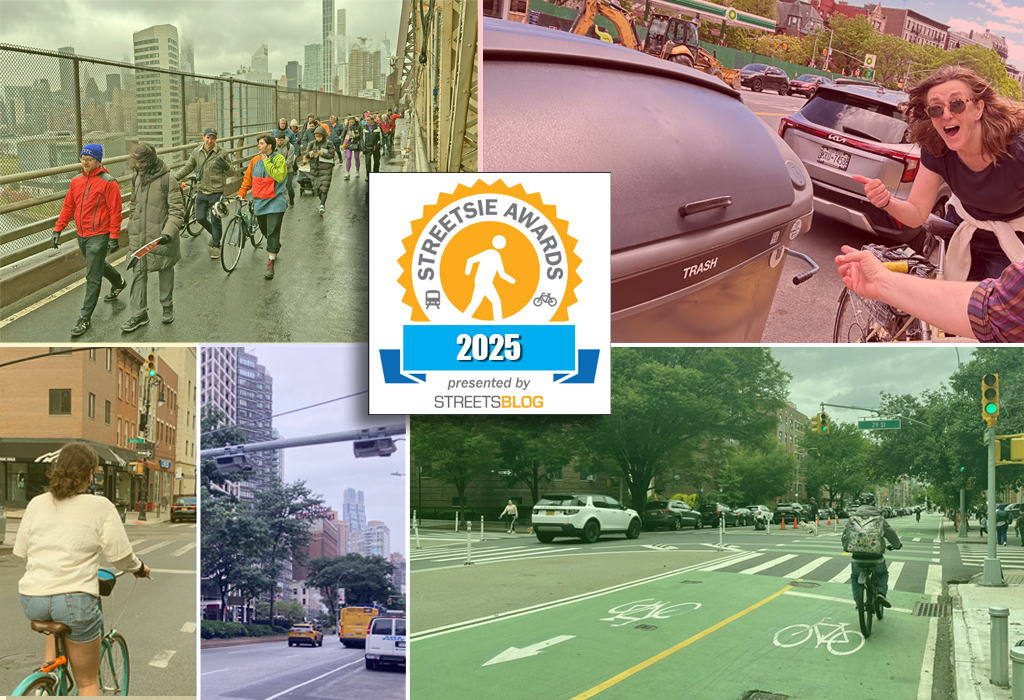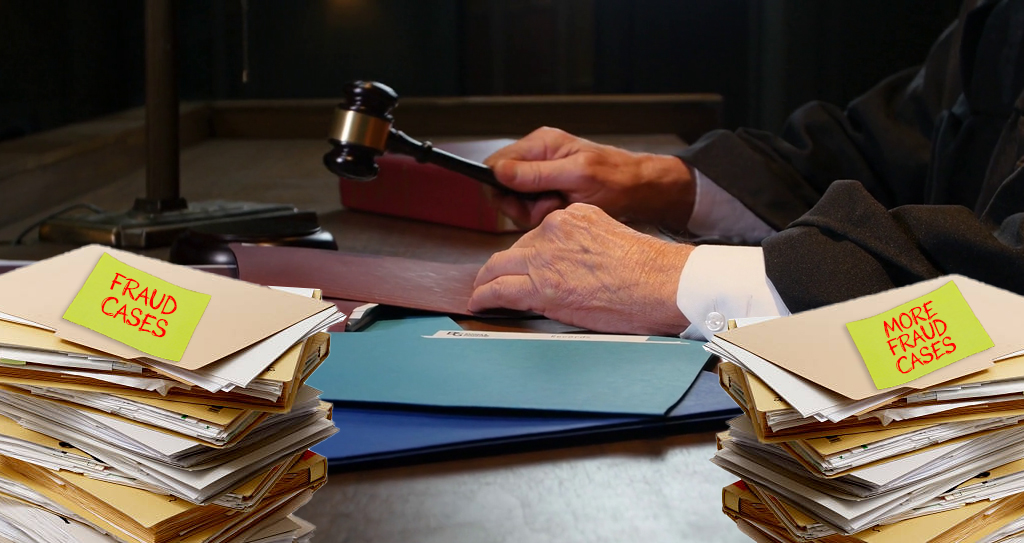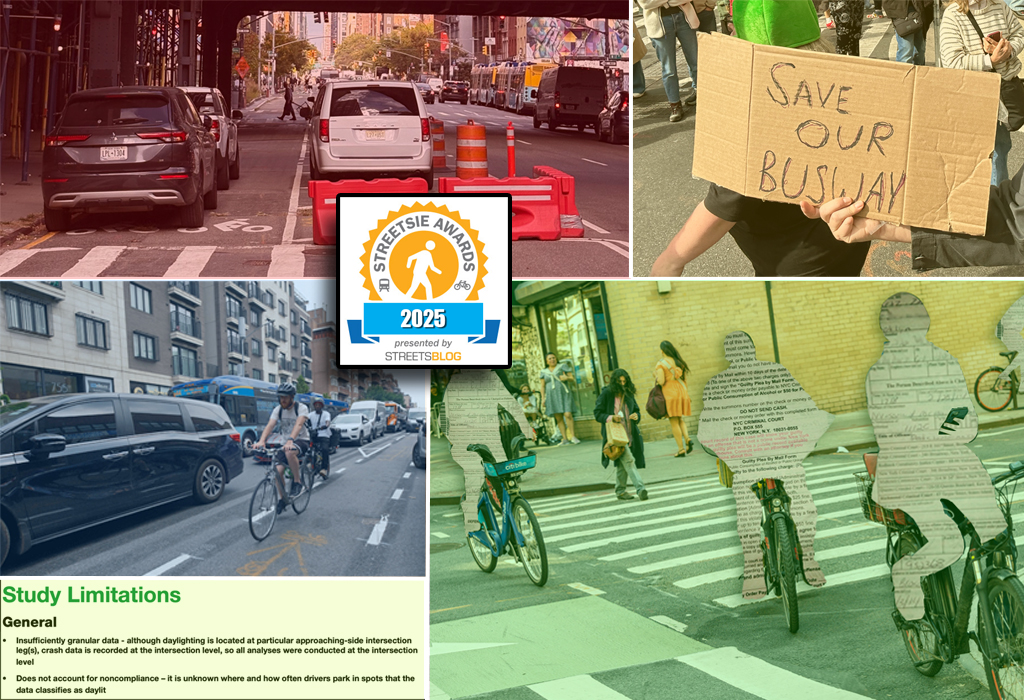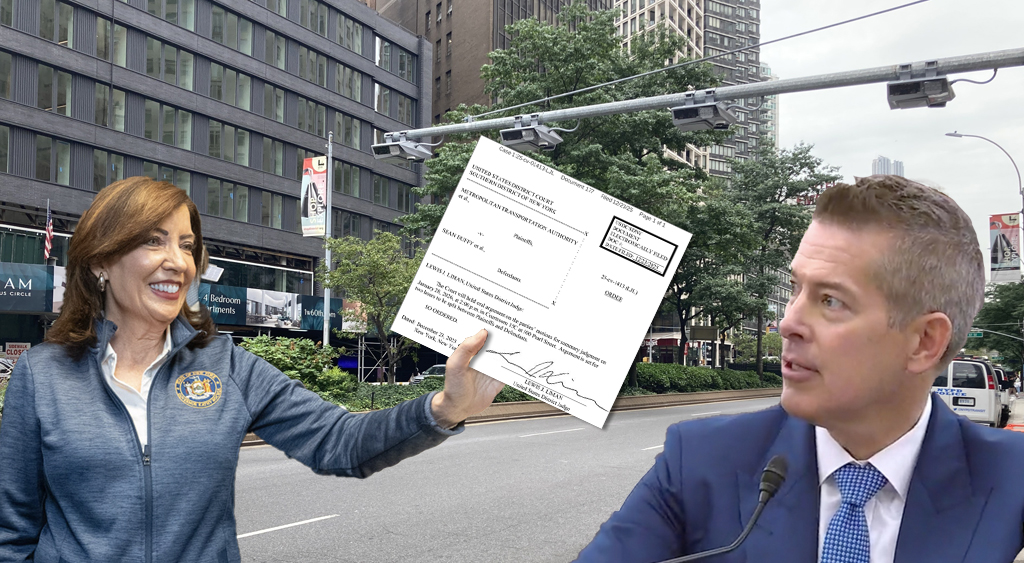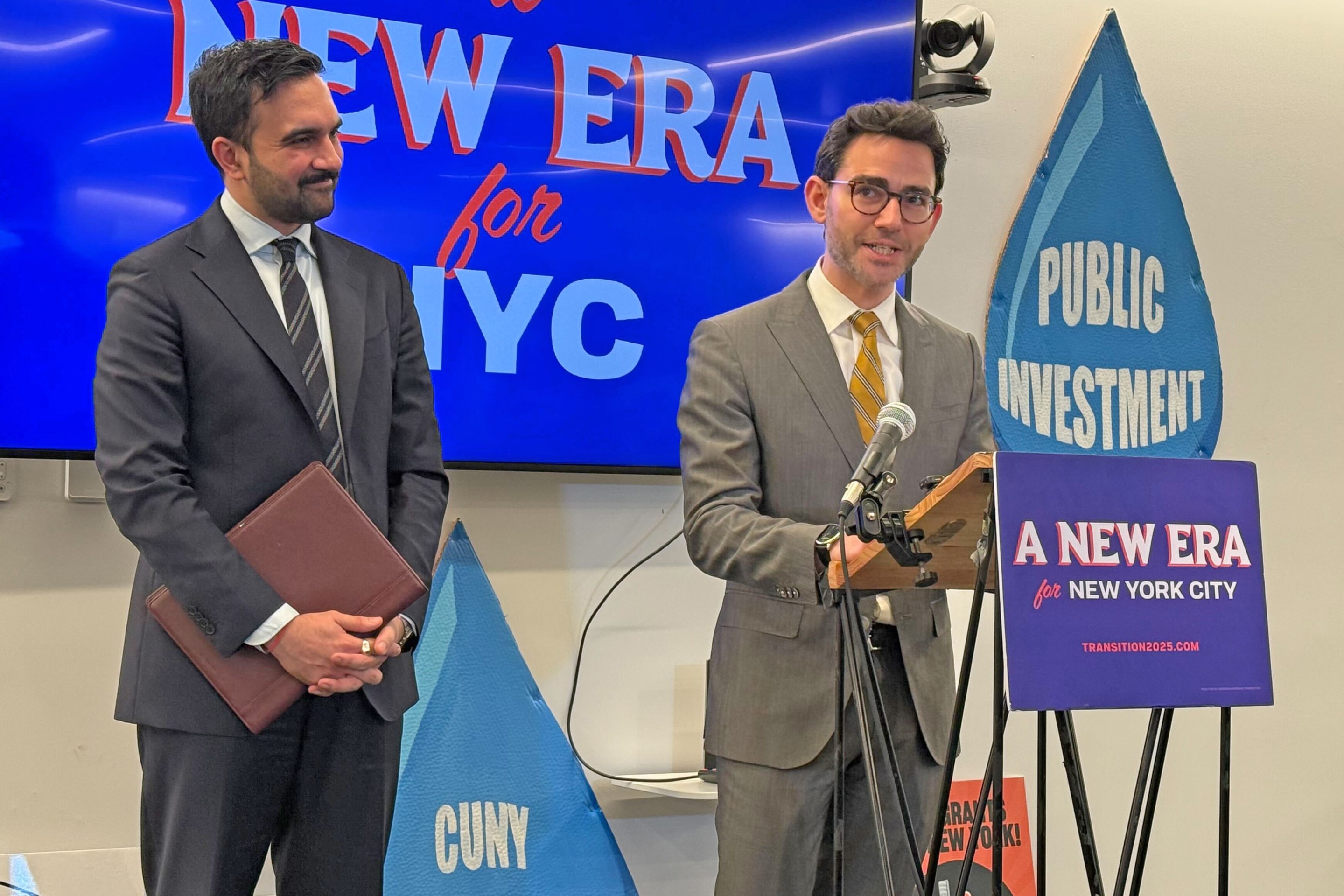Mayor Adams's disinterest in building bus lanes has had dire consequences for New York City's beleaguered commuters — who continue to suffer from speeds as slow as ever on the MTA's slowest-in-the-nation buses, according to a bombshell new report.
The city under Adams added just 9.6 miles of new bus lanes to city streets in 2022 and 2023 even as its overall budget grew substantially, the city's Independent Budget Office said in an analysis released Tuesday.
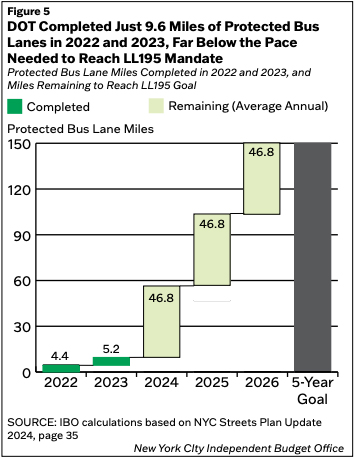
That slow pace of bus lane expansion and makes it "virtually impossible" for the city Department of Transportation to build all 150 miles of new bus lanes mandated by the Streets Master Plan law passed by the City Council in late 2019, the IBO said. Staffing for DOT units devoted to bus lane expansion has stalled — and in some cases declined — since the law's passage. Average bus speeds, meanwhile sat at just 8.1 mph citywide in 2024 — the same as the 8.1 mph average in 2019, the report said.
Adams entered office on Jan. 1, 2022 after pledging on the campaign trail to meet the streets plan's bus lane requirements. He has governed in contradiction to that pledge. In 2023, he told DOT staffers that he did not consider "how many bus lanes I do" as important to his legacy as mayor. He has since killed plans for a busway on Fordham Road in the Bronx while slow-walking bus lanes on Flatbush Avenue in Brooklyn. Last year, DOT installed just 5.3 miles of new bus lanes, Streetsblog reported in December. (Calendar year 2024 was not included in the IBO report.)
DOT officials have repeatedly said they need more funding to hit the street plan's mandates. The plan passed under then-Speaker Corey Johnson, but his successor, Adrienne Adams, has advocated for DOT to follow through on it — without allocating the agency the necessary funding.
Reached for comment, DOT spokesperson Mona Bruno acknowledged the resource-intensive nature of the Streets Plan, but added that the Adams administration is using camera enforcement in painted bus lanes to hit the Council law's definition of "protected bus lanes."
"New Yorkers deserve faster bus commutes and bus lanes that are free of double-parked vehicles, which is why DOT has focused on building physically protected bus lanes that keep cars out and using cameras to enforce against drivers who try to turn bus lanes into personal parking lots," Bruno said in a statement. "As the report acknowledges, this issue predates the current administration, but we are nevertheless committed to improving bus service for millions of New Yorkers."
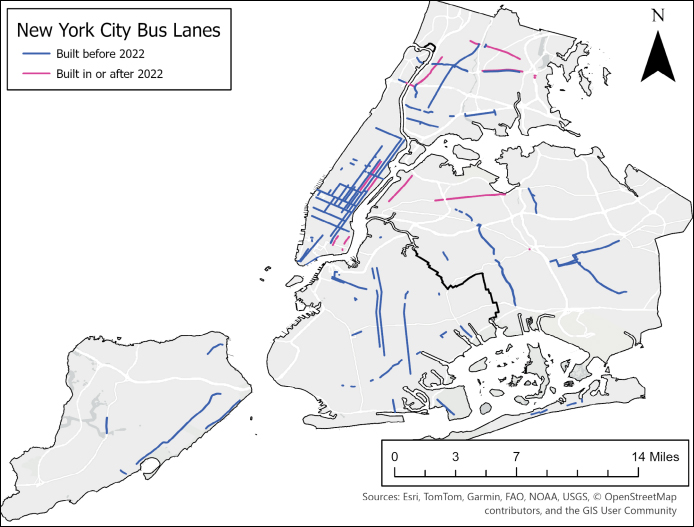
An unfunded mandate
DOT's budget has grown under Mayor Adams, but funding to meet the street plan's bus mandates has not, the IBO said. DOT's operating budget increased 28 percent from $1.2 billion to $1.5 billion from 2021 to Fiscal Year 2025. Its capital budget grew 39 percent over that same period from $1.3 billion to $1.8 billion, the report said.
Much of the budget increase can be attributed to inflation and union-negotiated personnel costs. The number of people in key units in the bus lane development process actually declined in headcount since 2019, the IBO said.
"Staffing may be a contributing factor to DOT’s slow progress on protected bus lanes," officials wrote. "While DOT’s resources have kept pace with general pressures on city spending, such as inflation and collective bargaining settlements, they fall short of the transformative investments the agency argues is required to meet the [Streets Master Plan] mandate."
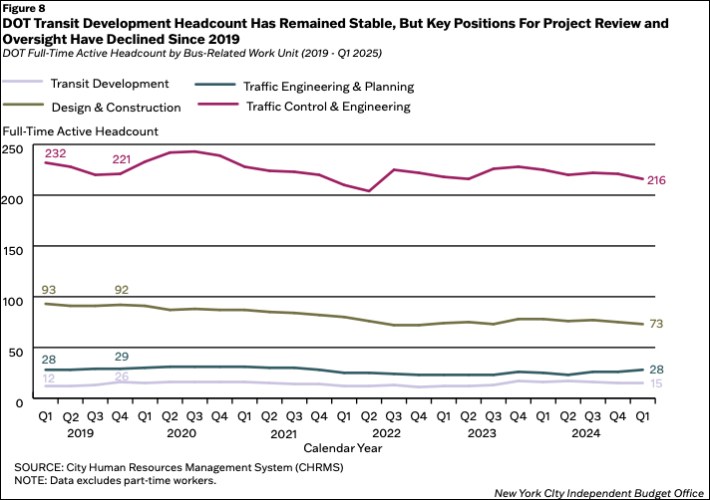
The MTA estimates around 1.4 million people ride New York City buses each day. Bus riders are much more likely to be low-income and come from communities of color.
Most of the city's bus lane effort under Mayor Adams has been concentrated in Manhattan and the Bronx. The city has not installed a single new bus lane in Brooklyn or Staten Island since 2020, the IBO said. Bus lanes have speed up buses in some locations, but not enough to offset the slowing impacts of congestion, illegal parking and other challenges on streets without them. Enforcement of the bus right-of-way has grown since 2019, but only on routes where cameras issue violations to drivers. Human enforcement is rare.
"Relatively few bus routes have dedicated bus lanes along their roads," the report said. "Even where there is existing bus infrastructure, City buses are plagued by a lack of bus lane and traffic rule enforcement."
Adams has emphasized his commitment to community input when pressed on his lack of commitment to the streets master plan, which also set mandated benchmarks for bike lanes, plazas and other street design elements. In reality, he's deferred to powerful interests opposed to such changes. On Fordham Road, where Adams scaled back several iterations of bus lane improvements, Hizzoner followed the lead of Fordham University, the Bronx Zoo and other business interests representing concerns of drivers from outside the borough.
Adams has prioritized municipal hiring freezes even when agencies like DOT need more people to meet their goals, not fewer, the IBO said. Activists agreed.
"While his transportation budget mushroomed, Mayor Adams shortchanged millions of bus riders," Riders Alliance spokesman Danny Pearlstein said in response to the IBO report. "Hiring freezes, misplaced priorities, and political interference by powerful people led to broken promises and neglected legislation."
The MTA for its part has also fallen down on its commitments to improve bus service, the IBO report said. For starters, the agency has been slow to roll out bus network redesigns it first announced seven years ago under then-New York City Transit President Andy Byford.
The redesigns, which aim to simplify bus routes that often date back to old streetcar lines, have so far only come to Staten Island the Bronx. MTA leaders approved a Queens redesign last month. Even then, the network changes, which faced lots of opposition, have so far not led to increased bus speeds — a sign of the importance of bus lanes and enforcement under the city's purview.
But MTA leaders have refused to implement all-door boarding on local buses, a key facet of Byford's bus improvement plan. MTA CEO Janno Lieber has no plans to introduce the feature, and last week said doing so would "confuse" riders and result in more bus fare evasion, which hovers around 50 percent.
Bus speeds in the Bronx post-route redesign have "outperformed the systemwide trend," representatives for the MTA noted in an email to Streetsblog. State authorization of automated bus lane enforcement cameras also resulted in a 5 percent speed increase where the tech has been enabled.
"We appreciate the IBO's report and are reviewing its findings," MTA spokesperson Eugene Resnick said in a statement. "The MTA remains committed to providing efficient and reliable service across the city by redesigning boroughwide bus networks, expanding Automated Camera Enforcement (ACE), and partnering with NYC DOT to create more dedicated bus lanes for faster service."
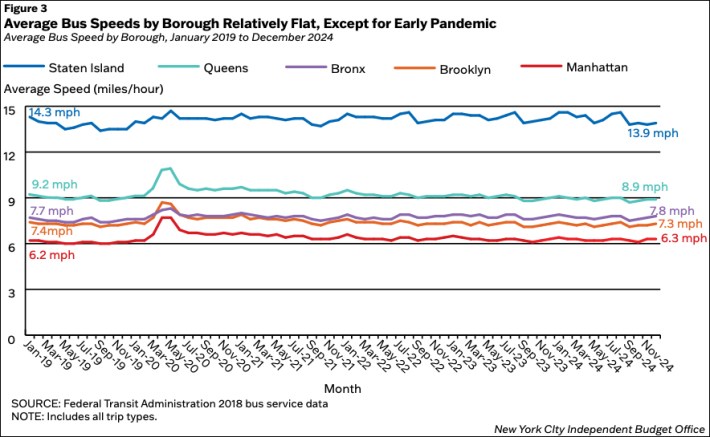
The IBO also released several interactive maps to go with its report that show the pace of bus lane expansion, bus speeds citywide and the relationship between buses and socioeconomic indicators like income and race.
City Council Speaker Adams suggested last February that she might sue Mayor Adams to get his administration to comply with the streets plan's requirements. But her public commitments to invest in DOT's capacity to meet those requirements has not led to adequate funding — at least according to the IBO.
The speaker's office did not return a request for comment.
